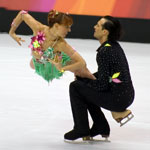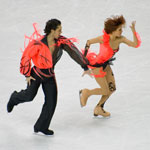★☆☆☆☆
The good: Cheap prices
The bad: French specifications, no local returns, questionable warranty
The ugly: lousy communications, price changes when you add item to your basket
The title of the post is a bit misleading as I did not actually manage to shop at Pixmania.co.uk. I tried my best but the shop was not competent enough to accept my money.
Pixmania.co.uk is an online shop that specialises in cheap electronics, especially digital cameras.
I opted to pick up my items from a local pick-up shop as this seemed very convenient. I was also hoping to save the £10 delivery charge but instead there was a £10 service charge on customer pick-up orders.
The items arrived promptly at the pick-up store but that is where my problems started.
The staff in the pick-up store was not able to charge my debit card as it involved getting an authorisation code from their bank.
It was obvious that the staff person was inconvenienced that he was required to call their bank. He was then a bit abusive on the phone. I was told repeatedly that there was an error at my bank.
The following communication with Pixmania was very difficult. Their call center is located in France and they were not familiar with the local pick-up shop procedures nor about standard UK debit card usage.
The automated email which is signed by James Felix (Customer Service Director) announces to use the contact address [email protected]. This address bounces however and the only way to send email to Pixmania.co.uk is to navigate through their FAQ (frequently asked questions) and hopefully finding an appropriate previous question.
The company operates from France and all electronic items are according to French standard. This means that instruction manuals and electric plugs are French by default. Pixmania calls this “European specification”.
The local pick-up shop I visited was handing out UK 3-pin adaptors and instructions on how to download the manual in English from the manufacturer’s web site.
For me the main reason for buying an item in the UK instead from abroad at a cheaper price is the assurance of an UK warranty. Due to the French operation of Pixmania I am not sure whether you can take a faulty item to the manufacturer in the UK or whether you have to deal with the manufacturer in France.
Pixmania states that certain faulty items will be dealt with by the manufacturer; others will have to be sent back to Pixmania in France.
An additional oddity was the way Pixmania prices change in real time. Wen I originally tried to add my item to the basket, I was returned an error (in French). Temporary problems are quite common on web sites so I just navigated back to the product. This was 10 minutes later and the price had gone up by £12.
After failing to pay for my item in the pick-up shop, I was told to put through a second order online and pay directly online. Again, the product I was interested in had gone up by £9 and was not a bargain anymore it had once been.
This bad experience of shopping at Pixmania is really my fault. I should have read some of the Pixmania.com reviews at the Review Center before making my decision.
An overall value of 1.2 out of 10 after 141 reviews is a really poor score. Only 6% of the reviewers would recommend to use Pixmania.com.
Month: March 2006
The secrets of iTunes and iPod recording
A recording engineer from KenRockwell.com has spent some time evaluating the various options in iTunes when copying (ripping) CDs.
His conclusion was that 128kbs AAC is indistinguishable from the original CD source; especially when combined with variable bit encoding (VBR).
Use following codec: 128kbs VBR AAC
Further he emphasises to always use error correction; something that is left out by default.
To enable error correction:
PREFERENCES > ADVANCED > IMPORTING > CHECK “Use Error Correction” box.
He finds AAC to be a more efficient codec than MP3 as it produces better quality audio with same size files (or smaller files with same audio quality).
It is not worth it converting all old MP3s to AACs but AAC should be used for new encodings.
I myself prefer MP3 due to it’s transportability (more devices support it) and absence of digital rights management (DMR). Even if I have to create larger files to achieve good audio quality (192kbs VBR).
[source]
Torino 2006 Olympic figure skating photographs
 Last week we attended two evenings in the figure skating competition at the Torino 2006 Olympics.
Last week we attended two evenings in the figure skating competition at the Torino 2006 Olympics.
(cut the talking and just show me the photos will you)
This was a nice opportunity to snap away with a big zoom lens and gave me a first hand experience in what I think can be called (amateur) photo journalism.
This included the taking and managing of a large amount of photos and finding an efficient RAW workflow.
During each evening there were 25 couples on the ice. On average I shot 10-15 photos of each couple. Using the built in LCD, I then quickly checked the photos and erased the obviously bad ones. This got it down to 4-6 photos per couple.
I can only fit 180 raw shots on the 1 GB compact flash (CF) memory card I use so the erasing of bad shots in between skating couples was necessary.
The equipment I used was a Nikon D70 (digital SLR) and a Sigma 70-300 mm (100-450 35mm equivalent) zoom lens.
The camera model is a fairly sophisticated SLR and includes some of the required features: shutter speed priority metering mode, continuous focus and continuous shooting mode.
Usually I can get steady shots at 1/30s using a 35mm lens but with the 300mm lens I could not go below 1/180s. Once I had noticed this, I locked the camera’s shutter on 1/180s.
This created many underexposed shots but it was only by .5 to 1 step underexposed and I knew I could compensate for this since I was working with raw images.
If I have to choose between blurred images due to camera shake and 0.5 step underexposure, I choose the underexposure any day.
With continuous focus I could follow the subject and the camera kept re-focusing continuously.
One drawback with the D70 is that it doesn’t have eye controlled focus. This forced me to keep the subject in the very middle where the camera focuses in order to stay in focus while in continuous focus mode.
On my older EOS-5 one can position the subject off center but by looking at it in the camera view finder, the camera keeps focusing on the subject.
The lifts were in my opinion the most beautiful and breathtaking part of the performances. In order not to miss any action shot, I let the camera fire 3 shots in quick succession during the lifts.
To travel light, I had not packed the camera battery charger with me. As the days progressed, I kept wondering when the battery would give in.
It did so after 5 days of shooting and after more than 370 shots. This included frequent use of the LCD screen and I find that impressive.
Back at home I was first overwhelmed with the large amount of photos. It took me a few days to summon the strength to start sorting through them.
With a large cup of tea next to me I started by viewing the photos on a large monitor and assigning a score between 0 and 5 to each one. At the same time I deleted the ones that were too blurry.
Several cups of tea later I could finally filter for photographs with a score of 3 or higher.
Had the project required more photographs I might have included score 2 as well. Had the project required just the best of the best, I would have only included photos with a score of 5.
At the moment I find this to be the best method to control a large collection of photos.
I then soldiered on by adjusting the white balances (mainly a batch process to majority of the photos since they all were from same light conditions) and exposure compensation.
 Normally I try to present photos just as they are captured without added cropping. This requires composing the image in the camera viewer as much as possible at the moment of capture.
Normally I try to present photos just as they are captured without added cropping. This requires composing the image in the camera viewer as much as possible at the moment of capture.
However due to the fast nature of figure skating, a 450mm lens and awkward spectator seats the photo compositions were all over the place.
So my last step was to reposition and crop each photo individually. I made sure to stay with the 3:2 proportions of my camera.
If you are up for it, there are many, many more photographs in the Torino 2006 Olympic figure skating photo gallery. View slideshow, delay 1 or 3 seconds, max size: no limit.
It was a lot of work but a great experience.
Update 2006-03-07
A here is the professional version of photo journalism (via Kottke).
